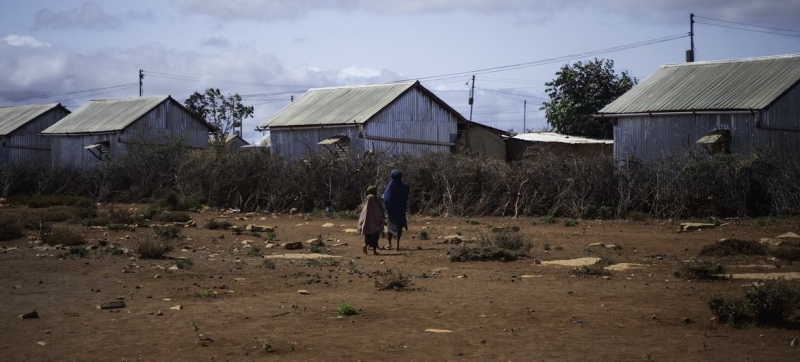
IDP camp in southern Somalia. Somalia declares state of emergency due to drought: millions face famine Humanitarian aid
Somalia is in the midst of a rapidly worsening drought, with a fourth rainy season in a row with very little rainfall, reservoirs running dry, large swaths of the country without water supplies and millions of people at risk of famine and displacement. UN humanitarian agencies warned about this on Wednesday.
On November 10th, the Federal Government of Somalia officially declared a state of emergency and appealed to the international community for assistance. The situation continues to deteriorate in the northern, central and southern regions of the country, the UN Office for the Coordination of Humanitarian Affairs (OCHA) said.
One of the worst-hit regions has been Puntland in eastern Somalia, where local authorities estimate nearly a million people are in need of support. At the same time, 130 thousand of them need emergency assistance. Those who visited the Bari and Nugal regions in early November recorded acute shortages of water and food. Local residents fear that the situation could develop into a disaster in the coming months.
“There has been no rain since last year; “This is the most severe drought in many years,” said Abdikani Osman Omar, head of the village council of the village of Shahda in the Bari region.
“Hundreds of displaced families arrived here three months ago and the flow continues. The arrivals are mostly women and children: the men have gone to neighboring Ethiopia in search of pastures and water,” he added.
According to Omar, the village has no resources to support the displaced, since even local residents there is enough water and food.
In many areas of Puntland, water bodies have dried up, vegetation has died, and many settlements have become empty.
In the city of Dahan, where short-term rains in early spring gave residents a reason to to hope for the best, people are now forced to buy expensive imported water – the local well turned out to be contaminated.
Serious funding gap
Lack of funding aggravates the crisis.
“We used to receive food aid, food for children and medicine for our health center. Now this assistance has practically stopped,” said the head of the Jama community, Abshir Khersi. About 150 families have relocated to the city, he said.
As of November 23, the Somalia 2025 Humanitarian Response Plan was only 23.7 percent funded. Because of this, organizations are forced to sharply reduce the amount of assistance. The number of people receiving food parcels has dropped from 1.1 million in August to just 350 thousand this month.
In Puntland alone, 89 nutrition centers and 198 health centers are facing extreme shortages resources.
Millions of people are starving
The drought is developing against the backdrop of an already extremely dire humanitarian situation. Some 4.4 million people are projected to face acute food insecurity by December, and 1.85 million children under five are estimated to be acutely malnourished by mid-2026.
Weather forecasts are not promising quick relief. The Food and Agriculture Organization (FAO) warns that dry and hot conditions will continue in most parts of Somalia, especially in the central and northern regions. “High temperatures and lack of rain are likely to worsen water stress and hamper the recovery of pastures in most areas,” it said. FAO.
